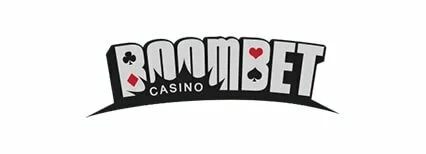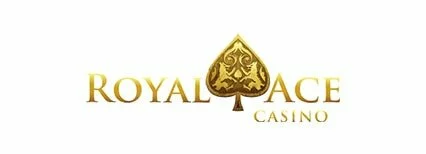Boombet
- Limited withdrawal amounts for players
- Delayed payout of legit winnings
- High fees for any withdrawal
Welcome to gambling-giant.org! If you’re looking for the best real money gambling sites, you’ve come to the right place. We’ve developed our website to help individuals find the ideal online gambling sites for their unique needs.
| Rank | Gambling Site | Deposit Bonus | Get Started | |
| #1 |

BetUS Casino
|
250% 0 | Visit Site | |
| #2 |

Super Slots
|
250% 0 | Visit Site | |
| #3 |

Wild Casino
|
200% 0 | Visit Site | |
| #4 |

BetOnline Sports
|
60% 0 | Visit Site | |
| #5 |

SportsBetting.ag
|
100% 0 | Visit Site | |
| #6 |

High Roller Casino
|
100% 0 | Visit Site | |
| #7 |

Bovada Casino
|
100% 0 | Visit Site | |
| #8 |

Las Atlantis
|
280% 0 | Visit Site | |
| #9 |

El Royale
|
240% 0 | Visit Site | |
| #10 |

Red Dog Casino
|
225% 0 | Visit Site | |
| #11 |

Ignition Casino
|
100% 0 | Visit Site | |
| #12 |

Cafe Casino
|
200% 0 | Visit Site | |
| #13 |

Slots.LV Casino
|
200% 0 | Visit Site | |

That said, we’ve got much more to offer than just recommendations for real money gambling sites. Over the many years we’ve been around, we’ve also created tons of helpful guides. No matter what you like to bet on, we guarantee we can help you increase your knowledge of online gambling.
As you’ll come to find, we’re here to be your one-stop-shop for everything related to gambling. Our site is packed to the brim with comprehensive and in-depth strategy guides, blogs, online gambling site reviews, and so much more.
Before we dive into things, we wanted you to know a little bit about our team. We’re lucky to have a team of experts on staff with extensive experience in the gambling field. Thanks to this, we can cover a wide variety of gambling-related topics, including sports betting, casinos, and more. If you’d like to learn more about the team of gambling-giant.org, we’ll touch on it in additional detail below.
By recognizing the good from the bad when wagering online, a patron can have a sense of security, knowing that no matter what is being played, it will all be handled professionally when everything is all said and done.
The websites we provided are great examples of trustworthy shops and how they should function in order to ensure a person’s online gaming experience is up to legal, ethical, financial, and professional standards.
Yes, it is legal to gamble online. If you want to play, but are stalled due to concerns regarding the legality of US gambling sites, fear not! The laws and regulations that target these sites are directed toward the markets themselves and their base of operation.
Online gambling is deemed completely legal at the federal level. But, for the most part, the state-based governments control its practice and regulation. For customers in the United States, the location of the person making the bet or play is often secondary to the one receiving it. Ultimately, questions of legality all go back to the location of the casino or where the website operates out of.
Due to the wide abundance of laws and regulations pertaining to gambling around the globe, we’ve built a page dedicated to explaining these wagering laws. If you plan on getting some action using an online gambling site and want to learn about the different rules, check out our dedicated gambling laws section.
One of the fastest-growing industries in both the sports and gaming worlds, the use of online sports betting sites has exploded from a niche practice to a preferred method to get action on sporting events. You’ll find recommended sites on different types of sports and events. Review some information on how to get started in the process below.
On the link below, we share advice about some of the best online casinos, how to find and use them, and how being involved with them will compare to a land-based casino. It is imperative for any patron—veteran or a rookie—to familiarize themselves with these concepts and practices as gambling becomes more digital.
The use of online gambling sites is becoming so common that many of the top-rated casinos and sportsbooks have taken the initiative and made these websites compatible via mobile app. Check out the link below to explore some of these popular and easy-to-use apps. Try them out yourself to see if they correlate smoothly with their associated betting site.
As cryptocurrencies like Bitcoin, Ethereum, or Litecoin continue to grow in popularity, we offer our support with our guide to using these crypto gambling sites. We gauge the markets that make up many of these crypto gambling websites to concoct a full list of betting sites to explore and use.
For those who enjoy the Triple Crown or just want to kill some time one afternoon, the social-oriented culture of race betting is still very appealing. Even in an era where sports wagering has exploded, a core demographic of bettors remains to play the races. We have that group covered here with our crop of horse racing betting sites linked below.

Even though there are so many new methods and practices of wagering surfacing every few years, some folks like to keep it traditional, using their own real money for their bets. Whether you’re a high stakes poker player or a sharp sports bettor, knowing the top gambling sites for real money deposits is a must.
One of the most valuable assets we offer to readers are in-depth reviews of online gambling sites.
Before you consider signing up for any real money gambling sites, be sure you consult our review to ensure it’s a legitimate operation that provides you with access to everything you’re in search of.
If you’re searching for unbiased and honest reviews of the best gambling sites available online, we’ve got them for you.
Below, we’ve added links to some of our most popular reviews of online gambling sites. If you don’t find one you’re interested in, click on the link below to view our entire collection. Chances are, we’ve reviewed the site you’re considering.
When we work up one of our in-depth online gambling site reviews, we don’t just take a few moments to look the website over. Instead, our team spends many hours digging deep into every aspect of their operation.
This way, we try to check all the boxes to make sure that any questions that may surface will be covered. We believe everybody should have their own individual methods, but we also aim to provide both experienced and novice gamblers with the right foundation to build off until they feel comfortable with using gambling websites.
Check out the list below to view some of the most important factors that impact each real money gambling site review.

Any time you have money on the line, trustworthiness becomes a premium. Confirming that a gambling website can be trusted allows for every ensuing step to be done with less doubt and caution.

The most respected and utilized wagering sites all offer bonus rewards and special promotions. Any credible place of business in the gaming realm (whether it’s online or land-based) is going to have these opportunities. Potential customers should be mindful of that for their own monetary gain.

No matter what stereotypes are attached to it, gambling is a customer-service based field of business. Heads of casinos, sportsbooks, and gambling websites all pride themselves on this notion. In order to cut the risk of losing business to rival markets, these establishments often go out of their way to assist the player with whatever they need.

Variety is crucial in gambling as experienced patrons know how important strategy is. A person’s strategic approach is often very much based off a spread of options, so the best online gambling sites take this into account. Legit businesses will often have numerous options and will actively find ways to add more options when the opportunity presents itself.

Site navigation and customer usage are huge with online gaming. The best sites ensure that their content and options are easy to locate, read, and understand. With the rise of mobile apps, trustworthy sites have adapted with the times and now have a mobile app variant of their book or casino. Mobile-friendly gambling sites are one of the biggest advances in the industry. As the technology behind them becomes more sophisticated, their appeal and overall usage only grows larger.
If you’re a first-time visitor to our website, we understand if you’re wondering why you should trust us and the information we have to offer. Check out the highlights below to learn about our team. Our goal is to always be your trusted source for high-quality and helpful information about gambling of all forms.

Luckily, we’ve got a fantastic team of folks who help by bringing you all the quality content on gambling-giant.org. You can check out our meet the team page to view details about our team leaders, content managers, graphic designers, and all others who work to make the magic happen. As you’ll see, we’re blessed to have so many amazing folks bringing their knowledge and skills to the table.

If it’s got anything to do with gambling, we’ve got you covered. No matter if you are gambling in person or using an online gambling site, we’ve built guides and resource pages on wagering topics across the board. And we offer advice to gamblers at all levels of experience and all walks of life. From casino game guides to sports betting strategy, it’s all here.

To ensure you have a safe experience while using real money gambling sites, we’d strongly urge you to consider using one of our recommendations at the top of this page. If you’re considering any options that are not included on our list of suggestions above, be sure to consult our blacklisted sites page linked in the section below. Here, you’ll find a collection of all the gambling websites we don’t trust and believe should be avoided entirely.
With such a focus on keeping business standards up and customer satisfaction high, the gambling sites that lack legitimacy and credibility are ones that should also warrant concern.
Here are a few examples of blacklisted online gambling sites and some of the qualities that make them a risk you want to avoid:



Whether you’re planning to gamble in person or gamble online for real money, we’ve built an excellent beginner’s guide for you. On the page we’ve linked below, we’ll help you build a solid foundation, starting with the fundamentals of gambling then exploring how to apply them.
From there, we’ll help you expand your knowledge base and assist you in the understanding of gambling concepts, terminology, strategies, and more.
Even if you are an experienced gambler but have only gone the “brick-and-mortar” route, you too can take your first steps into the online gambling world with this useful guide.
Once you’ve decided you’re ready to begin with gambling online, it won’t take you long at all to have everything set up. Perhaps the most time-intensive process is finding which online gambling website you’ll want to use. Luckily, we’ve provided a list of the best gambling sites at the top of this page. If you choose any of these websites, you’ll be working with one of the top choices in the industry.
After you’ve located the gambling website which fits your needs best, the rest of the process shouldn’t take more than 10 minutes. First, sign up for an account by providing some necessary information. Then, fund your account by making your initial deposit. You can use an instant funding deposit option like Bitcoin or Skrill if you’d like for your funds to be available for use immediately.
Since we all have different needs and wishes when it comes to online gambling, we can’t offer an answer here which will fit everyone visiting this page. However, we have built an excellent resource page that can help you pick real money online gambling websites. Check out the link below if you’d like to view ideas on the different things you should search for in an ideal gambling site for you.
Ultimately, nothing is stopping you from signing up for multiple real money online gambling websites. However, if you’re new to gambling online, we’d suggest you start by using just a single trustworthy operation. For many individuals, one high-quality gambling site can offer everything they need in one convenient location without the need to keep track of multiple logins and account balances.
For more experienced online gamblers, using more than one gambling website can have some advantages. This is especially true for those who are looking to shop their lines while online sports betting. In addition, using multiple real money gambling sites can also provide an opportunity to take advantage of many different bonuses and promotions.
There are several different reasons you might consider betting online as opposed to a physical casino gaming or sportsbooks. The top two things most gamblers enjoy about using online betting sites are convenience and bonus potential.
When it comes to convenience, online sportsbooks allow you to bet from your computer, tablet, or smartphone. This saves you from making a trip to your local brick and mortar gambling location. Instead, bets can be placed within a matter of moments from your fingertips. On top of that, sites also tend to provide convenience by offering a much more extensive assortment of betting options compared to physical gambling locations.
Then, there are bonuses and promotions associated with online betting. When using one of the best gambling sites suggested at the top of this page, you’ll have access to upwards of several thousands of dollars in bonus potential.
In most cases, you’ll have access to a variety of ways you can make deposits and withdrawals. Check out our details page about gambling site payment methods to learn about some of the most common and popular options in the industry.
No. While some gambling websites offer the option to use downloadable software, it’s not a requirement when online gambling for money. These days, many sites provide players the ability to gamble online directly from their browser.
There are several types of devices you can use for online gambling. One option is to use a computer or laptop. Secondly, many of the best operations now allow clients the chance to bet from mobile devices. This enables you the opportunity to quickly do your online gambling from the palm of your hand.
The minimum deposit required to get started gambling online varies between operations. However, based on our experience, it’s not uncommon to find online gambling sites willing to get clients going with a deposit as small as $10. Contact the customer service team of any gambling site you’re considering if you’re unsure of their minimum requirements.
In many cases, yes. It’s not uncommon to find online gambling websites that allow you the chance to play many of the casino games for free. Free casino play is an excellent option to use when you’re learning how to play a new game or when you simply don’t feel like wagering real money at the time.
However you’d like. Once the start-up process is complete, you can go about your business the same way you would on a property, but with the added convenience of being able to gamble from anywhere through the internet. It is recommended to make wagers online in similar fashion to wagering at land-based casinos. The concepts remain the same but are simply utilized through a different medium.
Avoid it. Visual red flags are one of the earliest signs that an online casino or sportsbook is faulty and difficult to trust. Legitimate gambling websites do a great job at presenting their information in a way where the site or mobile app appears as simple as possible. If you visit a site and are immediately thrown off by what you find, your best move would be to avoid it. Don’t risk giving them your business.
Unfortunately, depending on where you live it may be easy to still gamble online. However most gambling sites do have measures or laws in place to help prevent that. Problem gambling is a very serious problem and is not worth taking any chances with. We highly suggest visiting this gambling helpline if you feel you or a family member may have a gambling problem.
All major forms of gambling are just as compatible online as they are in person. The customer experience will obviously vary due to location and the type of action a player is involved with. But the actual functionality of gambling websites runs perfectly in line with what takes place at traditional, land-based casinos and sportsbooks.
Get the most out of our website by checking out our blog. We cover a variety of different gambling-related topics every day. Here, you’ll find up-to-date posts from our team of experts to help better inform you and guide you along on your wagering journey. Take a look at the most recent posts below or visit our full gambling blog to view our entire collection of posts.
Be up-to-the-minute in everything in the gambling world with our news section. Our team provides daily coverage to all the happenings in the casino and sports betting industries. If you want to be caught up with all of the breaking headlines and developing stories, we’ve got you taken care of here.
Looking to place real money on the big game or upcoming sporting event? Then, you don’t want to miss out on our free sports betting picks! Our experts from around the world present the information you need to know to become a profitable sports bettor. New picks are released from our team every day, and you can view the full lineup by visiting our betting picks page.